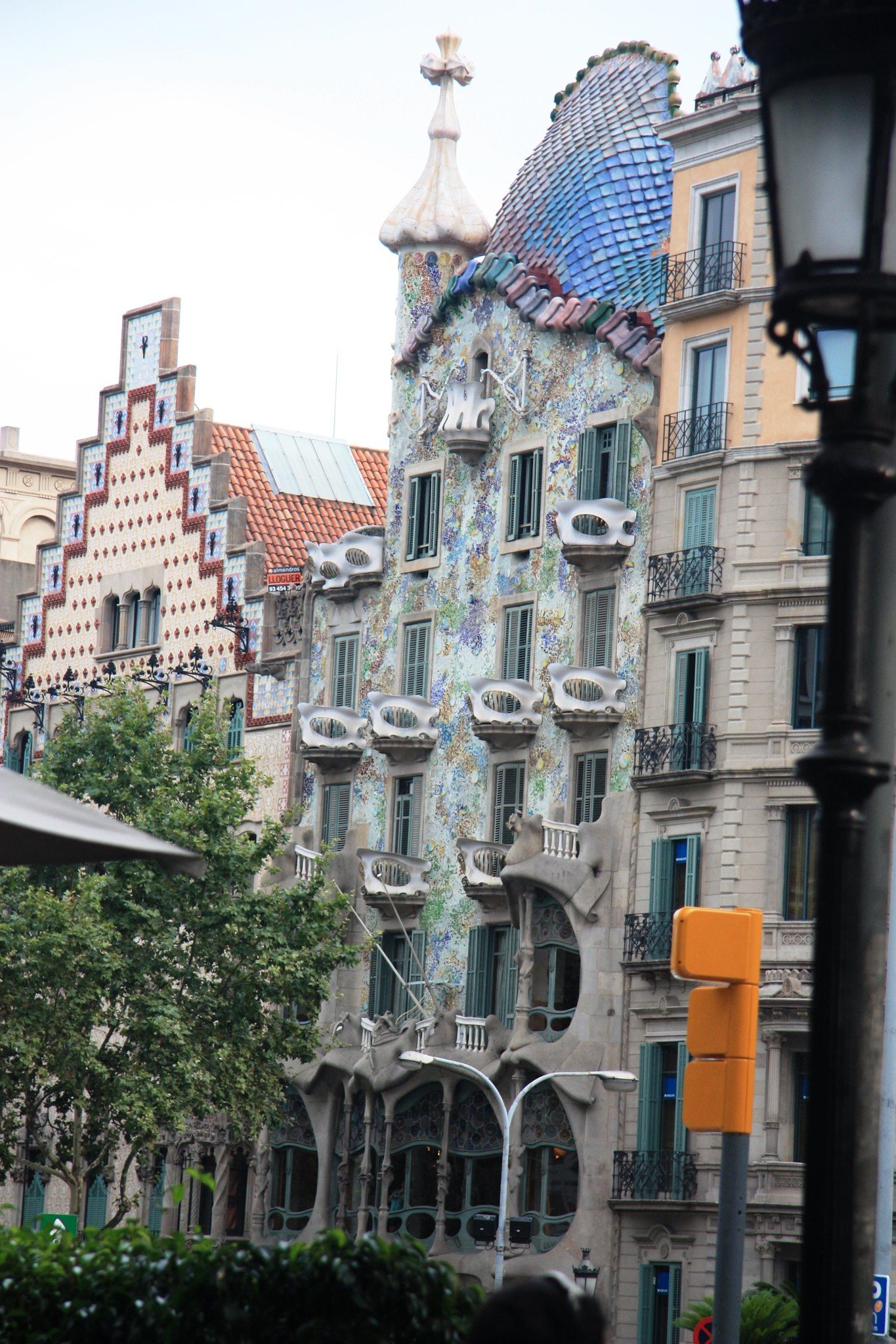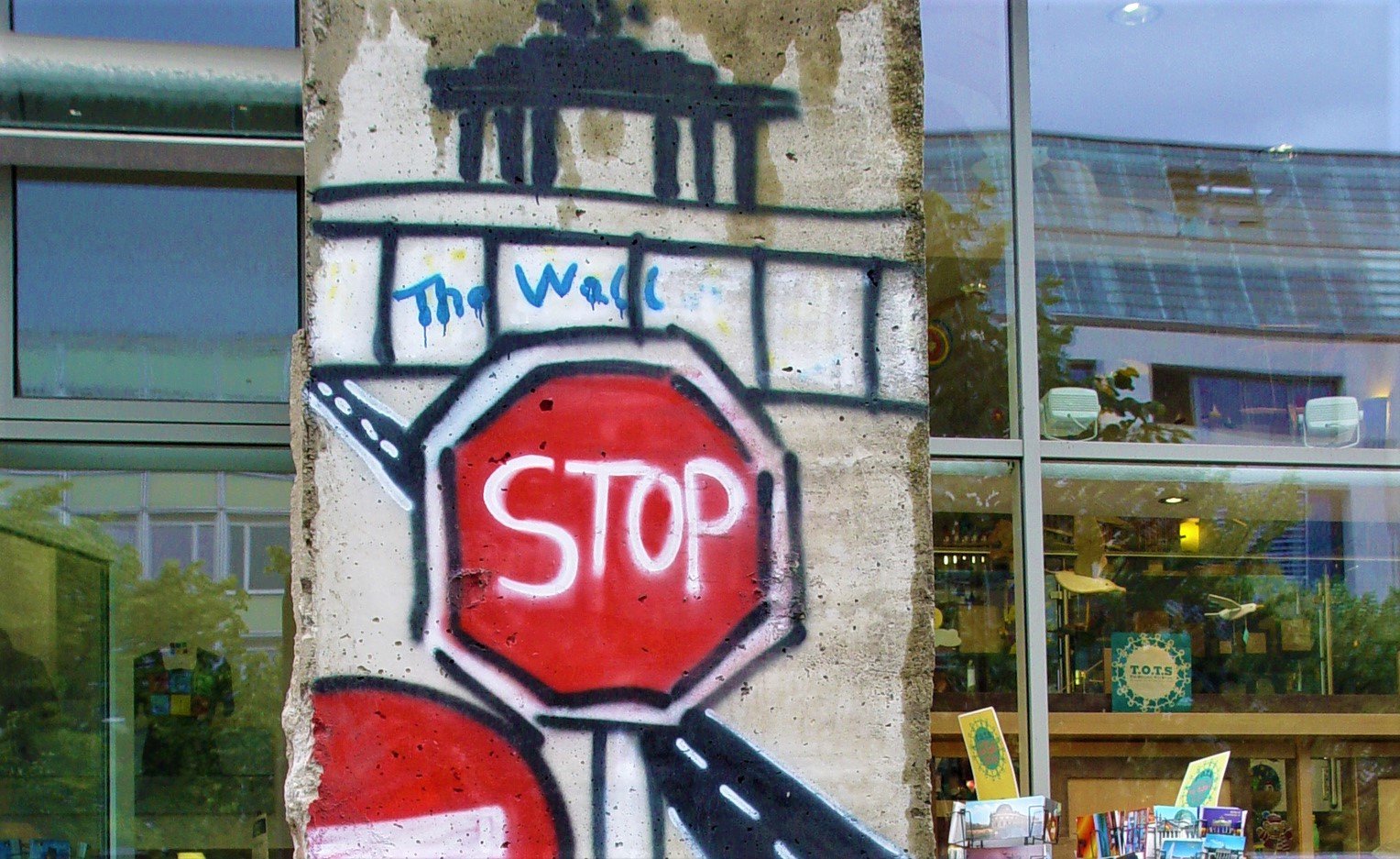We arrived in Barcelona early in the morning after a hellish overnight train ride that we still remember more than 10 years later. Bleary-eyed and groggy, our zombie-like entrance into the city was less than glorious. But that didn't matter after all. We were in Barcelona. The city of Lionel Messi and FC Barcelona. The Catalan capital. Independent, resilient, and proud. The place where the word “cheese” was no longer “queso” but “formatge” and where the passersby spoke not Spanish but Catalan. The unofficial flags of Catalonia, the Estelada, looking awfully like the flags of Puerto Rico, albeit with white stripes colored in yellow, were ubiquitously swinging from nearly every balcony. Like an off-tune, counterfeit version of Freddie Mercury and Montserrat Caballé, we entered the city’s Gothic Quarter excitedly humming:
Barcelona
It was the first time that we met
Barcelona
How can I forget
The strangest thing is that although I was excited to be here, as we walked the narrow streets of the oldest part of Barcelona, they somehow felt inauthentic to me. They didn't feel like the Barcelona I had created in my imagination years ago. When I was 15, in art history class, I saw images of Sagrada Familia in a textbook for the first time. Barcelona’s landmark cathedral looked unfinished yet so bizarrely beautiful and whimsical with its Neo-Gothic skeletal exterior. In class, I learned about Antoni Gaudí, a Catalan architect behind the cathedral and other unique buildings in the city. For many years, I had associated Barcelona solely with Gaudí and his quirky architecture. I imagined that the city was filled with nothing but his buildings.
We visited Barcelona in August 2010. Those were still lean years. I had just graduated from law school, and our travel was on a shoestring. On our second day in the city, we went to see the cathedral. Trying to save money, we decided to buy one ticket and then take turns seeing it. I left Julia outside, promising to return twenty minutes later to switch places. I somewhat naively believed that the best feature of Sagrada Familia was the unfinished exterior and that the interior wouldn't take much time to see. Forty minutes later, I returned completely flustered, admitting that I would need at least two hours to see it properly. The inside was as spectacular as the outside. We took turns and spent nearly half a day there.
The cathedral is famous for its snail's pace of construction. When Gaudí died in 1926, the construction was underway, and today, nearly 100 years later, it is still unfinished and not projected to be completed for at least another decade. When we were there, the work was actively in progress. Construction workers, up below the ceiling on ladders and scaffolding, were cutting and hammering away—the noise of chainsaws and hammers echoing through the building. One portion of the cathedral was cordoned off, with construction dust floating in the air. In other circumstances, I would be annoyed, but here I was witnessing living history. Can you imagine being there when the Taj Mahal was constructed? Or the Great Wall of China? I watched the construction workers with silent admiration and appreciation.
Gaudí was known for his desire to emulate nature. The most striking feature of the interior of Sagrada Familia is a group of supporting columns in the nave resembling a forest with branches. We visited on a sunny summer day, and sunlight seeped and reflected through stained-glass windows, creating an enchanting image of a colorful stone forest.
Outside, the most spectacular feature was the nativity facade, dedicated to the birth of Jesus. One of my favorite things at Sagrada Familia was taking an elevator and then climbing stairs to get to one of the steeples to enjoy views of the cathedral spires and the city.
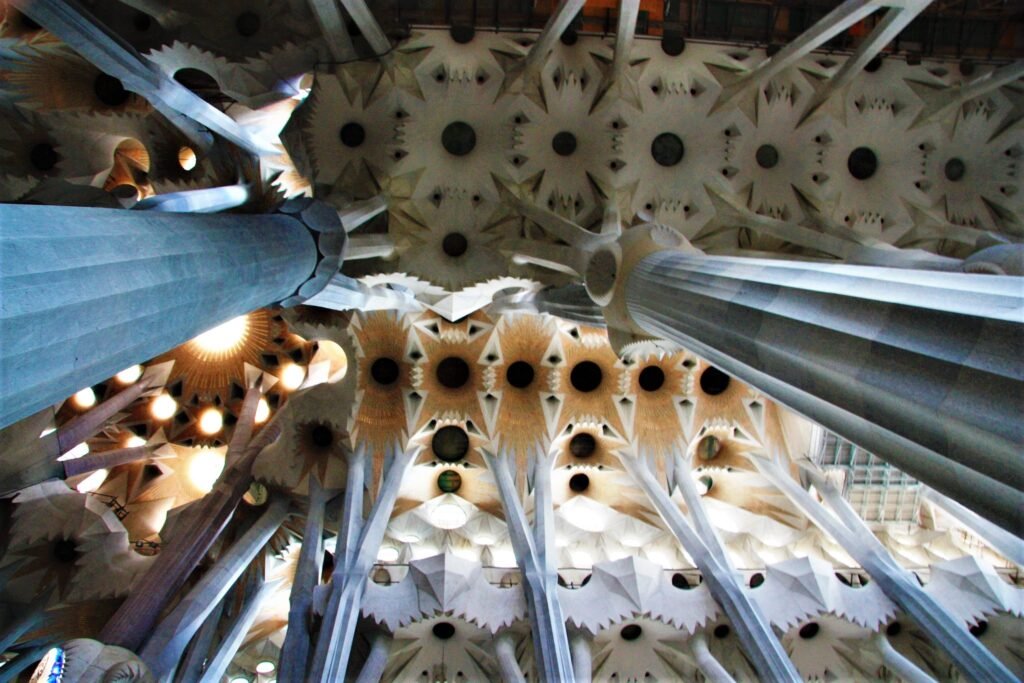
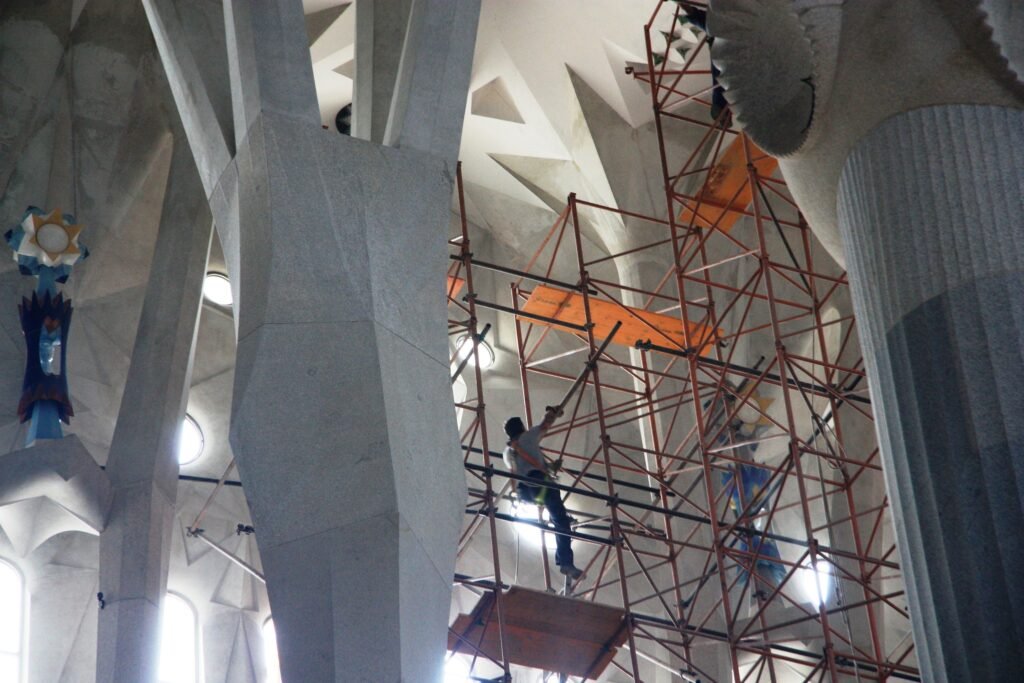
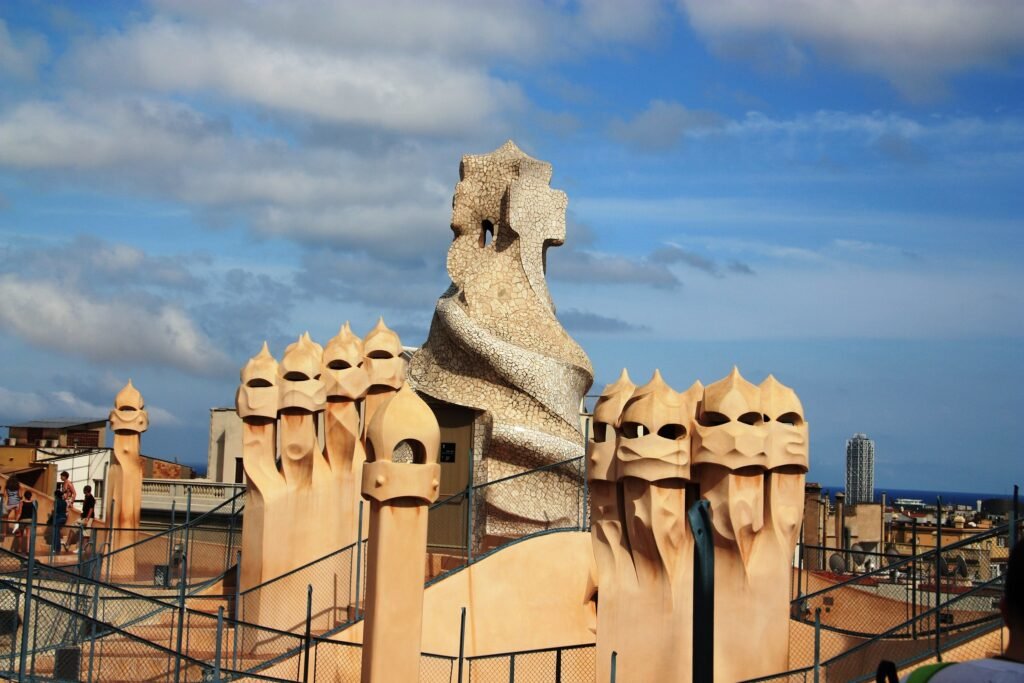
The next day, we had another frugal dilemma. We needed to decide which of the two iconic UNESCO World Heritage Gaudí houses to tour: Casa Batlló or Casa Mila. We just couldn't afford to indulge ourselves in visiting both. Today, we would certainly have bought admission to both buildings, but in 2010, we counted pennies and made hard choices. We agreed to pay admission for Casa Mila but admire Casa Batlló from street level for free.
Both houses are masterpieces, and Gaudí's genius is on full display in these buildings. Avoiding straight lines and hyperbolizing Art Nouveau style, Gaudí took modernist architecture to new levels. The curving and protruding balconies with exquisite ironwork, melting-looking windows, a colorful mosaic made of broken ceramic tiles, and whimsical ventilation towers evoking images of either medieval fortresses or mountains of Cappadocia, Casa Milà, and Casa Batlló are like nothing else.
To cap our Gaudí-mania, we took a cab to Parc Güell, also designed by Gaudí and another UNESCO World Heritage site. The park is situated on a hilltop and was once conceived as a housing development that never materialized. Throughout the park, whether in a multicolored mosaic salamander sculpture or a colorful serpent-shaped bench, Gaudí’s touch is everywhere. You don't need to be a Gaudí expert to easily spot some of the signature features of his works.
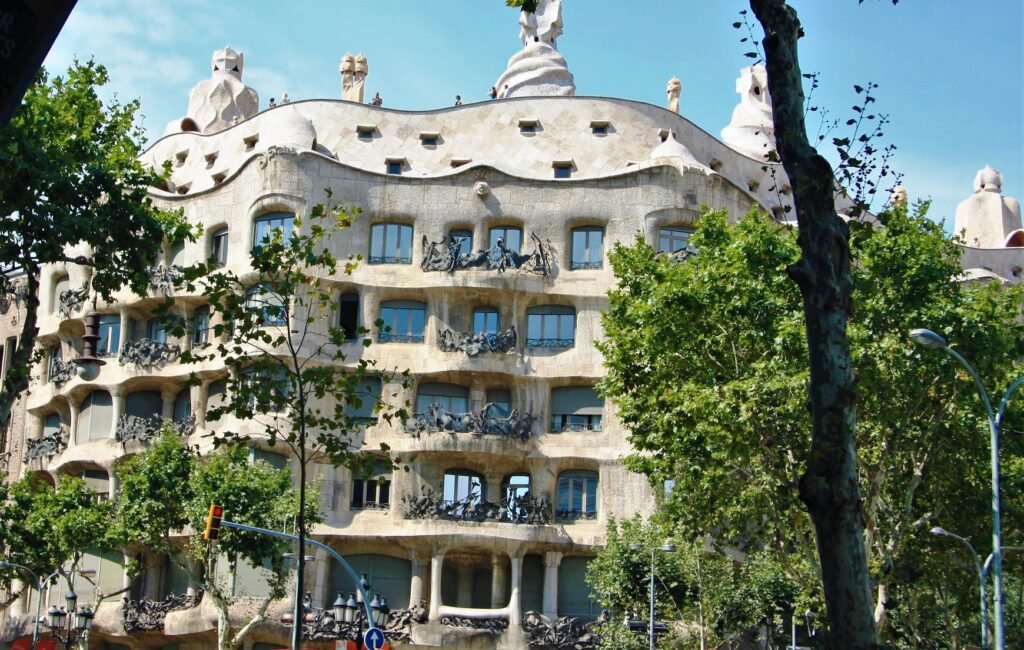
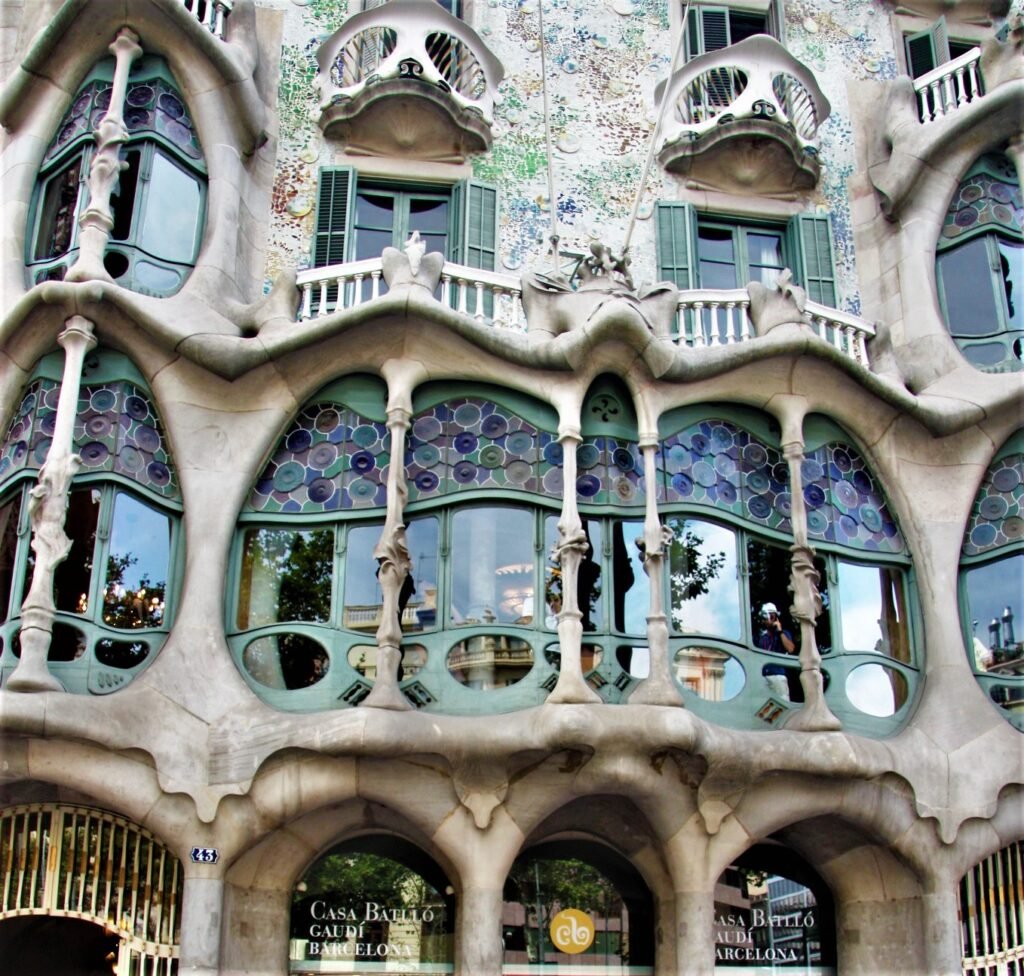
We visited Parc Güell on a beautiful August afternoon. The gorgeous views of Barcelona, the Mediterranean Sea, and Sagrada Familia were right in front of us. The viewing platform towered over pretty gingerbread houses that looked like something out of a fairytale. There were not a lot of people in the park, and the atmosphere was tranquil. In the following years, that would change dramatically. Barcelona, and Parc Güell specifically, would go on to become a huge hit with tourists, bringing hordes of visitors chasing Instagram-worthy pictures. Overtourism would cause the city to do the unthinkable … charge 10€ to get into the park. Locals are still allowed to visit for free during certain hours. We are just happy that we avoided the madness and enjoyed Parc Güell when it was still free of charge and tourists. Back in 2010, when our lunch was sharing one crepe from a street food stall, 20€ to get into the park very well might have broken our budget.
I often wonder if it’s time to revisit Barcelona. With better travel skills and fatter wallets, it could easily be a completely different experience. I imagine standing inside Sagrada Familia and spotting every way it changed in the last ten years, or seeing it fully finished after the 100th anniversary of Gaudí’s death, in 2026. Heck, I would even buy my own crepe at a sit-down restaurant and raise a glass of Penedès to Catalonia and all our future travels.


